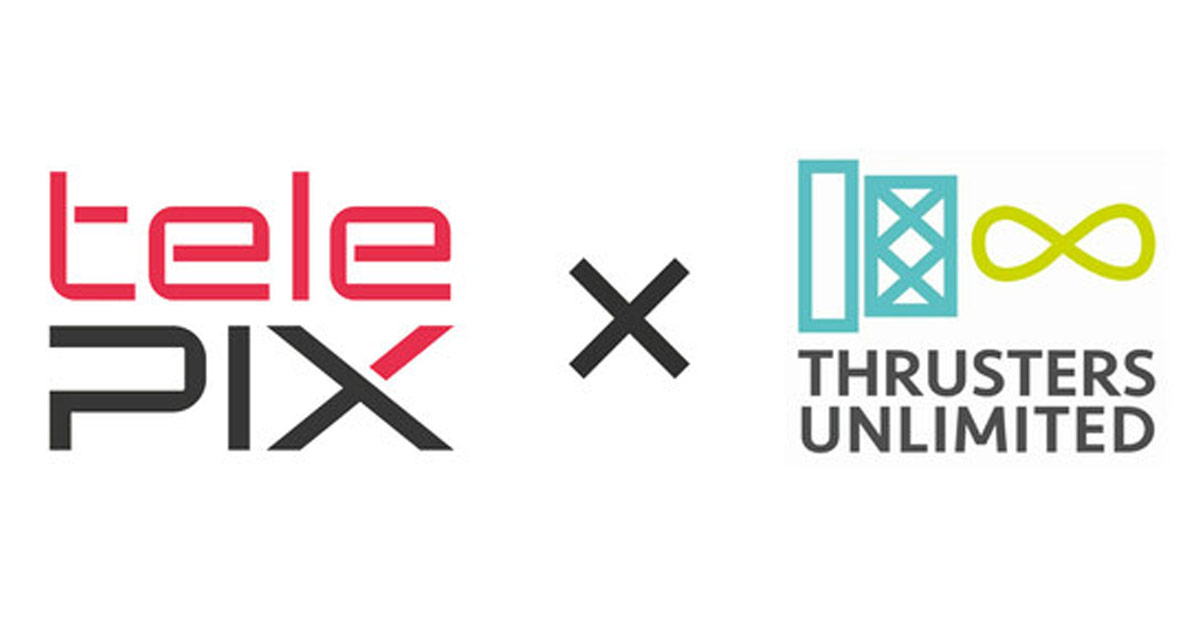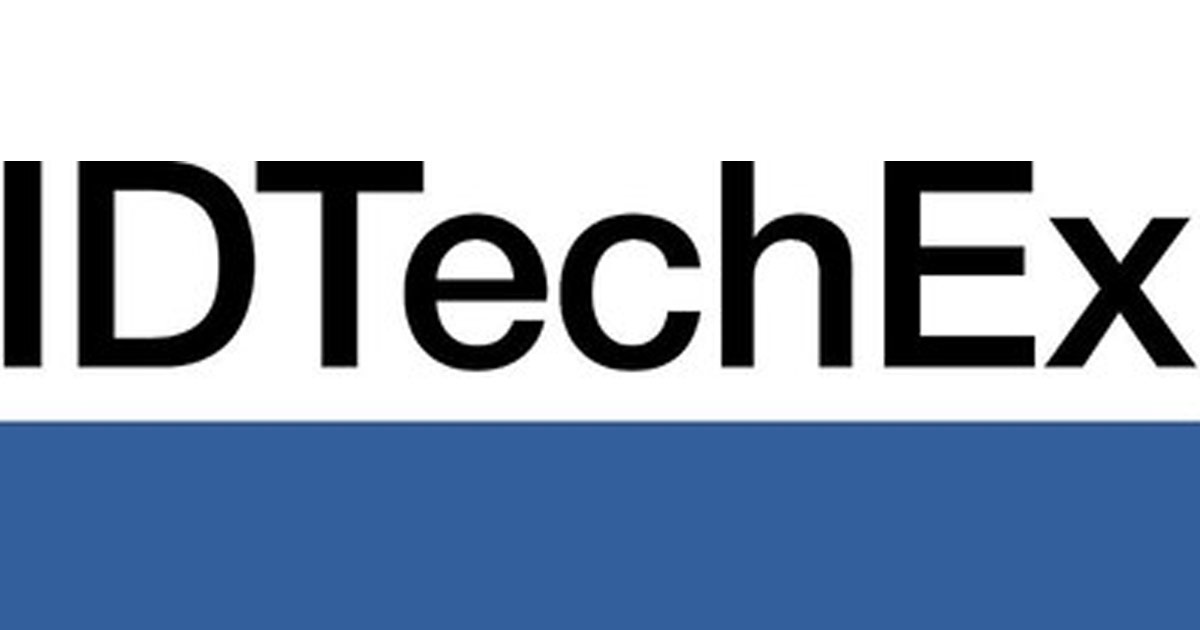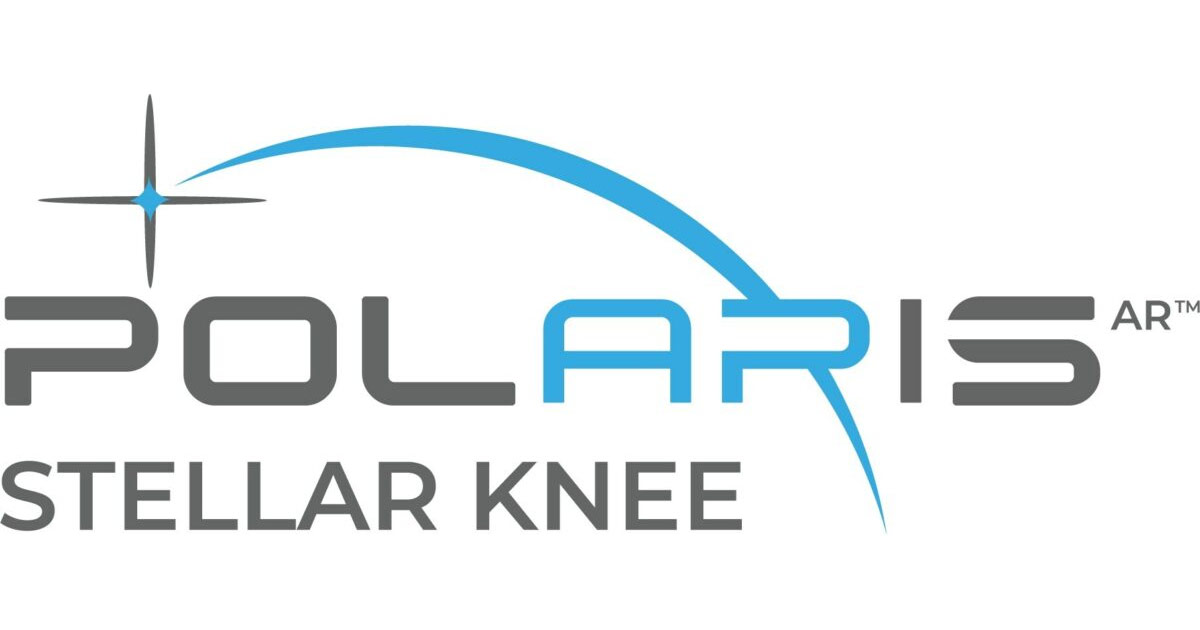Skipify Receives the Title “The
- admin
- 03 November 2023
SAN FRANCISCO, Nov. 2, 2023 /PRNewswire/ -- Skipify, a fintech company, has been recognized as "The Future of Payments Infrastructure" by Money20/20. The
South Korean Aerospace Newcomer TelePIX
- admin
- 03 November 2023
SEOUL, South Korea, Nov. 2, 2023 /PRNewswire/ -- TelePIX, a leading South Korean space startup, announced the signing of a Memorandum of
Factor Capital Management Initiates Venture
- admin
- 03 November 2023
CHARLOTTESVILLE, Va., Nov. 2, 2023 /PRNewswire/ -- Factor Capital Management, an investment firm founded by former GSR Markets and Two Sigma Investments Executive Jake
The Race for Visibility: The
- admin
- 03 November 2023
BOSTON, Nov. 3, 2023 /PRNewswire/ -- Virtual and Augmented Reality (VR and AR) headsets share, on the surface, 90% of the
Polaris[AR] Granted FDA Approval for
- admin
- 03 November 2023
MIAMI, Nov. 3, 2023 /PRNewswire/ -- POLARISAR is pleased to announce today that their STELLAR Knee has received 510(k) clearance from the U.S.

Skipify Receives the Title “The Infrastructure of Future Payments” within The Money20/20 Startup Network
SAN FRANCISCO, Nov. 2, 2023 /PRNewswire/ — Skipify, a fintech company, has been recognized as “The Future of Payments Infrastructure” by Money20/20. The distinction was given during a keynote presentation at the Money20/20 USA Conference in Las Vegas, the world’s biggest and most influential gathering of the global money ecosystem. Skipify was also named to Money 20/20’s inaugural list of the 7 most exciting fintech startups as part of the inaugural “Money20/20 Startup Network”. These recognitions come just 72 hours after Samsung announced an investment into Skipify to further accelerate the growth of Skipify’s Connected Wallet. “Seeing Skipify continue to take Payments deeper into the customer experience is exciting for us, and the entire Fintech ecosystem”, said Zach Anderson Pettet, US Content Director at Money20/20. “Their innovative approach to the digital wallet creates better outcomes for shoppers, merchants, and financial institutions, and we’re excited to support them as they emerge as a widely recognized name.” Built-in partnership with the world’s largest financial institutions, Skipify’s Connected Wallet brings together merchants, shoppers, and financial institutions at the moment of purchase for the first time. This next-generation digital wallet creates an open infrastructure at the moment of purchase, solving for ideal outcomes and products for the consumer, in a user experience that is just as convenient as traditional wallets. By integrating payment details, user authentication, reward points, and more into checkout in real time, Skipify transforms and elevates the shopper experience. This has led to fewer cart abandonments and increased conversion rates for merchants while enhancing card member loyalty for financial institutions. Skipify was recognized as a Future of Payments Infrastructure company for its innovative approach that benefits all stakeholders in the payments ecosystem. The 2023 cohort of the Money 20/20 Startup Network was kept tightly under wraps, and exclusively unveiled on the opening day of the conference. The seven handpicked companies represent the future of key areas in fintech innovation, according to Money 20/20, which brings together the most innovative people in payments, fintech, and the broader financial services industry. Skipify shares the honor with Ansa, TodayPay, Kamino, Themis, Hypercard, and TripleBlind. “Money20/20 has been a tremendous catalyst and supporter for the entire Fintech ecosystem,” said Ryth Martin, CEO and founder of Skipify. “As we continue to expand our ecosystem of shoppers, financial institutions, merchants, and technology partners, this acknowledgment from a brand that carries the weight of Money20/20 further validates our vision to enable an end-to-end connected experience for payment and commerce.” About Money20/20Founded in 2011, Money20/20 creates destination shows where the most innovative people in payments, fintech, and the broader financial services industry connect. Famed for their high-impact networking, the Europe edition, held in Amsterdam (6-8 June 2023), and the USA edition, held in Las Vegas (22-25 October 2023), are regarded as the place where money does business by financial services professionals. Money20/20 also recently launched an Asia edition, due to launch in Bangkok in April 2024. Money20/20 is the space where the industry’s smartest visionaries and innovators come together to create the future of money. Money20/20 is an Ascential show. Follow Money20/20 on Twitter and LinkedIn for show developments and updates. About SkipifySkipify is a fintech company based in San Mateo, CA whose mission is to bring seamless and spectacular shopping experiences that allow the entire ecosystem to win. Skipify is used by merchants to enable a better purchasing experience online, in stores, and across marketing channels. Skipify has been recognized as a Fintech Top 50 company, a Leading 100 startup, and a CB Insights Retail Tech 100 winner. Skipify is backed by some of the world’s leading fintech and commerce enablement investors, including Amex Ventures, Samsung NEXT, PayPal Ventures, Synchrony Ventures, FIS, Okta Ventures, Point72 Ventures, Flourish Ventures, Infinity Ventures, Vinyl, and BDT & MSD Partners. SOURCE Skipify

South Korean Aerospace Newcomer TelePIX Joins Forces with Mexico’s Geo-Data Firm Thrusters Unlimited for Market Growth in Latin America and the Caribbean
SEOUL, South Korea, Nov. 2, 2023 /PRNewswire/ — TelePIX, a leading South Korean space startup, announced the signing of a Memorandum of Understanding (MOU) with Thrusters Unlimited, a Mexican geo-information company. The MOU was signed on October 17th, solidifying the commitment of both companies to establish a cooperative partnership within the space industry for the Latin America and Caribbean (LAC) market. TelePIX and Thrusters Unlimited have expressed their mutual interest in focusing on the development and delivery of earth observation satellites and value-added services (VAS) products utilizing satellite imagery. This partnership marks a significant milestone in TelePIX’s strategic expansion efforts into global markets, including Central and South America, as well as Europe. The collaboration between the two companies has been a topic of discussion for the past year, and the MOU serves as a formalization of their shared vision for the future. As part of the agreement, TelePIX will provide essential information on satellites tailored to Thrusters Unlimited’s requirements, including VAS for vessel detection and argassum detection. In return, Thrusters Unlimited will contribute crucial market insights and potential customer leads for satellite and VAS services in the Latin America and Caribbean market. TelePIX has been actively pursuing partnerships and agreements to establish a strong foothold in the LAC region. Earlier this year, the company solidified a business agreement with Mexican space company Space Zero Gravity on June 2nd. Furthermore, TelePIX is making strides in the European market, as evidenced by its recent satellite information provision contract with Poland-based company SatRev on October 5th. In recognition of its technological excellence, TelePIX was honored with the Grand Prize at the startup pitch day during the ‘1st KOR-LAC Innovation & Trade Forum’ held in Mexico City on October 20th. The event, jointly hosted by the Ministry of Planning and Finance and the Inter-American Development Bank, aimed to foster stronger commercial ties and cooperation between South Korea and countries in Latin America and the Caribbean. TelePIX distinguished itself among 16 high-tech companies with its real-time streaming space data solution addressing global challenges such as climate change. Established in 2019, TelePIX is known for its innovative products, ranging from earth observation satellites to satellite imagery data analytics, including its proprietary sargassum detection software. Looking ahead, TelePIX is gearing up to introduce a groundbreaking service in 2024 – the world’s first Blue Carbon observation, utilizing its state-of-the-art satellite image-based super-resolution quantitative detection technology, with a focus on marine floating algae. For more information about TelePIX, a member company of Global Digital Innovation Network (formerly known as Born2Global Centre), and its innovative satellite technology, please visit www.telepix.net. SOURCE TelePIX

Factor Capital Management Initiates Venture Fund I with $30 Million Focus on Blockchain Startup Investments
CHARLOTTESVILLE, Va., Nov. 2, 2023 /PRNewswire/ — Factor Capital Management, an investment firm founded by former GSR Markets and Two Sigma Investments Executive Jake Dwyer, announced today the launch and first close of its Factor Venture Capital Fund I with approximately $10M in commitments. The fund aims to invest up to $30m in seed-stage startups that leverage blockchain technology to solve real-world problems. Venture Fund I is backed by a group of investors, including GSR Markets, Theta Capital Management, executives from Two Sigma Investments, and the founders of Multicoin Capital, Lattice Capital, and Cosmos Network, amongst others. The fund plans to write checks ranging from $500k to $1m to exceptional entrepreneurs at the earliest stages of company development. Blockchain technology has promised to change the way we conduct business by introducing trustless efficiencies in archaic analog systems. While the early applications of blockchain technology were often associated with cryptocurrencies and speculation, the technology has come a long way since its inception. Existing Factor portfolio companies like Koywe, Jasmine Energy, Neutral, and Parcl are already driving significant efficiencies for businesses and consumers using blockchain technology to solve real problems today. The team at Factor Capital has been observing the evolution of blockchain technology since its launch and believes that now is a unique time to invest in this innovation’s early stages as this mainstream impact accelerates. With advances in AI and decentralized blockchains, it is easier than ever for small teams to bring high-impact visions to life from anywhere in the world. “We are excited to partner with founders and investors who align with our vision of investing in businesses that have a real-world impact,” said Factor’s founder, Jake Dwyer. “Our thesis is basic: blockchain is on the cusp of mainstream adoption, and we want to support the companies that will drive this adoption forward.” For more information, please visit https://www.factorcapital.com/. About Factor Capital Management: Founded in 2023, Factor Capital believes in leveraging cutting-edge technologies, native digital assets, and full-stack problem-solving methodology to accelerate innovation. The firm was founded by Jake Dwyer, a startup and finance executive with over 20 years of operating experience leading early-stage businesses and driving innovation within world-class investment managers like Two Sigma Investments. We seek to consistently invest in and leverage emerging technologies, using data and software to create efficiencies as an investment manager and deliver superior returns. The team brings an operator’s mindset to investing and is an active partner to entrepreneurs, working alongside them to build sustainable and valuable businesses. SOURCE Factor Capital Management

The Race for Visibility: The Future of AR Display Technologies and Their Role in Mainstream Adoption
BOSTON, Nov. 3, 2023 /PRNewswire/ — Virtual and Augmented Reality (VR and AR) headsets share, on the surface, 90% of the same parts. However, two key technologies separate the former product category, which has sold in the millions on the consumer mass market, from the latter, which is yet to crack the mainstream market. Near-eye optics form one part of the puzzle, but display systems offer an equal challenge. AR headsets offer some of the toughest challenges available to today’s display industry. Requirements vary depending on the intended application and the optical technologies the displays are paired with, but a typical AR headset might require its displays by: Extremely bright to compete with ambient light and pair with inefficient waveguide optical combiners – yet power-efficient enough to allow a reasonable battery life without making the headset too heavy. Compact and lightweight enough to fit into slim frames that do not look too dissimilar to normal spectacles. At least high resolution enough for good legibility of text and notification content, or even full Mixed Reality (MR) experiences. Low-cost enough not to blow the bill of materials budget for the headset. As detailed in IDTechEx’s report “Displays for Virtual, Augmented and Mixed Reality 2024-2034“, meeting all of these in the same package is no easy task, and there are multiple potential approaches. This begs the question: which display technologies will dominate the next generation of AR devices? MicroLED microdisplays on the way to mass adoption? MicroLED microdisplays might be the most hyped AR display technology and are an increasingly common choice in minimalist AR devices which are aimed more at minimizing intrusion than maximizing immersion for the wearer. So far, China’s Jade Bird Display (JBD) has led the way here, with its microdisplays finding their way into headsets from players including Vuzix, TCL, and Oppo: indeed, IDTechEx is not aware of any microLED-powered AR headsets on the market not using JBD’s panels. MicroLED displays offer special advantages in terms of brightness-to-volume ratio (unlike many competing technologies, these panels emit light directly instead of being illuminated by a separate light source, which adds bulk) and maximizing pixel density, but there are significant issues to solve. So far, JBD has only been able to offer VGA (640×480) resolution (likely to minimize defect rate in its panels), and if a full-color display is needed, then the outputs of three single-color displays are combined with prisms in the current iteration (JBD says a single panel solution is in the works). However, in the applications targeted so far, these displays more than suffice, with headsets using JBD panels offering compelling visual experiences when demoed by IDTechEx’s analyst. Laser beam scanning displays: ready for re-entry? Manufacturing at scale remains the most difficult problem to solve for microLED microdisplays, with complex mass transfer processes and high defect rates being significant roadblocks, keeping JBD alone in serving this market commercially for now. Laser beam scanning (LBS) displays, which draw images using modulated laser beams, could soon offer competition here. They can be made almost as compact as microLED microdisplays (Austrian startup TriLite Technologies’ Trixel 3 LBS display has a volume of less than a cubic centimeter), can couple efficiently with waveguide optics due to their highly collimated output light and, unlike microLEDs, are based entirely on established hardware technologies. It even looked like Google was using the display type in its Project Iris AR headsets, although this project may now be paused or canceled. However, environmental sensitivity and minute alignment tolerance requirements represent downsides with LBS that have delayed adoption, although software tricks help reduce these issues. Pushing resolution higher without using hardware tricks that can introduce visual artifacts is difficult, but if used in minimalist AR devices, this does not present much of a limitation. More established technologies show their value OLED-on-Silicon (also known as micro-OLED) and Liquid Crystal-on-Silicon (LCOS) displays are the more established display technologies holding much of the rest of the AR display market, with good reason. OLED-on-Si offers high resolution at a relatively low cost and is the technology of choice for lower-cost, consumer-focused AR headsets like those from XReal, but their relatively low brightness means they are incompatible with the waveguide optics used in most higher-end devices. LCOS, meanwhile, tends to be the technology of choice for the most immersive MR-capable AR devices, although brightness efficiency and relatively high costs for high-resolution panels present issues here. Future developments and further insight What should be clear from the assessment above is that a range of display technologies are likely to maintain their place in AR over the next decade. IDTechEx’s recent report, “Displays for Virtual, Augmented and Mixed Reality 2024-2034“, offers a detailed analysis of the spatial computing display landscape. When benchmarking display technologies in this report, IDTechEx found that, as a rule, technological performance was negatively correlated with commercial performance: the question for headset engineer is how much value they place on top-end performance vs. raising prices or making their supply chains hard to manage. In addition to this benchmarking and in-depth overview of the XR display technology space, the report includes granular ten-year market forecasts and assessments of the potential for success of the technologies covered.For more information on this report, please visit www.IDTechEx.com/ARVRDisplays, or for the full portfolio of augmented, mixed, and virtual reality research available from IDTechEx please visit www.IDTechEx.com/Research/WT. About IDTechEx IDTechEx guides your strategic business decisions through its Research, Subscription, and Consultancy products, helping you profit from emerging technologies. For more information, contact research@IDTechEx.com or visit www.IDTechEx.com. Source: IDTechEx.com

Polaris[AR] Granted FDA Approval for Stellar Knee System
MIAMI, Nov. 3, 2023 /PRNewswire/ — POLARISAR is pleased to announce today that their STELLAR Knee has received 510(k) clearance from the U.S. Food and Drug Administration (FDA). STELLAR Knee is the first clearance for POLARISAR, a company focused on creating a new category in Mixed Reality surgical guidance. POLARISAR and STELLAR Knee are building the intersection of physical surgery and virtual surgical guidance, bringing about a one-of-a-kind digital operating room environment. This digital OR environment utilizes Mixed Reality displays to provide surgeons with real-time access to intraoperative anatomic data used to measure, plan, and guide Total Knee Arthroplasty procedures. Using a unique blend of proprietary optical tracking algorithms and spatial computing software, STELLAR Knee measures and captures clinically meaningful hard and soft tissue anatomic data, enables sub-millimetric intraoperative planning, and provides precise resection accuracy and guidance. “This is an important moment for orthopedic surgery,” stated Dr. John Cooper, Associate Professor of Orthopedic Surgery, at Columbia University Irving Medical Center. “Prior to STELLAR Knee, I was dependent on either the imprecision of conventional instrumentation, or complex technologies like robotics to improve surgical precision. These technologies, while delivering important data that can be used to personalize the operation for each patient, require a large footprint in my OR and a significant financial commitment from my institution. Now, I can wear a low-profile digital assistant that delivers real-time measurements and calculations I can trust, validating surgical decisions.” With no operating room footprint other than a Mixed Reality headset that acts as a 3-dimensional spatial computing tool, STELLAR Knee dynamically acquires patient-specific anatomic data, digitizing that information into holographic displays. By capturing the surgeon’s field of view, STELLAR Knee creates a real-time digital data exchange between the surgeon and the technology that informs clinical decisions. Surgeons have full interactive capabilities with a highly customizable and intuitive user interface, enabling them to make quick assessments and micro-adjustments to the surgical plan. With minimal physical setup, an easy integration process, and competitive pricing compared to traditional surgical guidance systems, STELLAR Knee has the ability to shift the standard of care. The STELLAR Knee workflow is open and available to be utilized across all total knee replacement implant systems. POLARISAR and STELLAR Knee are creating a new category in surgical guidance software utilizing the latest visual display technology. “One of the most important aspects of new technology entering the operating room is the impact it makes and footprint it requires,” stated Dr. Francis Gonzales, Professor of Orthopedic Surgery, the University of California, San Diego. “Technological advancements don’t always correlate with improvements within the OR. STELLAR Knee is an exception. With no footprint outside of the headset, no computers, or stalls, it does the thing it was designed to do brilliantly well – empower me to focus on what matters most, the surgery, and to be confident in the decisions I make.” “Our software has the capacity to usher in the next generation of surgical advancements,” said Paul Mikus, Chief Executive Officer of POLARISAR. “This is a new day for orthopedics, and surgery as a whole because the promise of Augmented Reality is now being fulfilled. STELLAR Knee is pioneering a new class of surgical software that utilizes best-in-class spatial computing and optimizes operating room workflow. STELLAR Knee not only impacts the surgeon and the patient but also empowers healthcare providers to change the standard of care.” Please visit this link to learn more about POLARISAR and STELLAR Knee, and to connect with a sales or POLARISAR team representative. ABOUT POLARISAR POLARISAR is a Miami-based startup whose mission is to develop a new class of Mixed Reality surgical technology. Their goal is to optimize intraoperative workflows and improve upon patient outcomes using advanced, 3-dimensional spatial computing algorithms – spanning beyond traditional navigation, patient-specific instrumentation, robotics, and first-generation augmented reality. The U.S. Food and Drug Administration cleared STELLAR Knee in 2023. The company was founded in 2020 and is headquartered in Miami, Florida. For more information click POLARISAR. SOURCE PolarisAR

ICCASET 2023 – Las Vegas
International Conference on E-commerce, E-administration, E-society, E-education and E-technology 27th November 2023 Las Vegas, USA The aim of the International Conference on E-commerce, E-administration, E-society, E-education, and E-technology is to bring all the scholars, researchers, and professionals on one platform to discuss the most talked about topics. These platforms will help you build a meaningful network, explore new fields, and present your ideas. Gain immense knowledge on subjects by attending these high-level conferences. For further information ICA.
